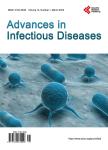Feasibility of Integrating Leprosy Post-Exposure Prophylaxis with Single-Dose Rifampicin (LPEP) into Routine Leprosy Control Program in Bukedi and Teso Regions in Uganda
Feasibility of Integrating Leprosy Post-Exposure Prophylaxis with Single-Dose Rifampicin (LPEP) into Routine Leprosy Control Program in Bukedi and Teso Regions in Uganda作者机构:Ministry of Health National Tuberculosis and Leprosy Program Kampala Uganda German Tuberculosis and Leprosy Relief Association Kampala Uganda Kibuku District Local Government Kibuku Uganda Budaka District Local Government Budaka Uganda Department of Internal Medicine Mbale Regional Referral Hospital Mbale Uganda Department of Internal Medicine Soroti Regional Referral Hospital Soroti Uganda
出 版 物:《Advances in Infectious Diseases》 (传染病进展(英文))
年 卷 期:2024年第14卷第3期
页 面:563-580页
学科分类:1002[医学-临床医学] 100206[医学-皮肤病与性病学] 10[医学]
主 题:Leprosy Post Exposure Prophylaxis Single Dose Rifampicin
摘 要:Background: World Health Organization recommends the implementation of contact tracing and Leprosy Post Exposure prophylaxis (LPEP) to interrupt the chain of transmission. To accelerate the uptake of this recommendation, a cross-sectional study among contacts of leprosy patients was conducted to investigate the feasibility of integrating leprosy systematic contact tracing and post-exposure prophylaxis (PEP) into the routine leprosy control program. Methods: This was a mixed methods cross-sectional study. The study was implemented in Kumi, Ngora, Serere, Soroti, Budaka and Kibuku Districts. Results: The 45 enrolled index patients (97.8% of the registered) identified a total of 135 contacts, of which 134 (99·2%) consented and were screened. Among them, one new leprosy patient was identified and started on treatment with multidrug therapy (MDT). All the eligible contacts, received the prophylactic treatment with Single Dose Rifampicin (SDR). Overall, SDR was administered to 133(98.5% of the listed contacts) with no adverse event reported. Factors associated with successful contact investigation and management included: Involvement of index patients, health care workers during the contact screening and SDR A administration, counselling of the index patients and contacts by the health care works, LPEP being administered as Directly observed Therapy (DOT) among others. Results Interpretation: The integration of leprosy post-exposure prophylaxis with administration of SDR and contact tracing is feasible, generally accepted by the patient, their contacts and health workers and can be integrated into the National Leprosy control programmes with minimal additional efforts once contact tracing has been established. Therefore, we recommend integration of administration of SDR in to the routine leprosy control program.



